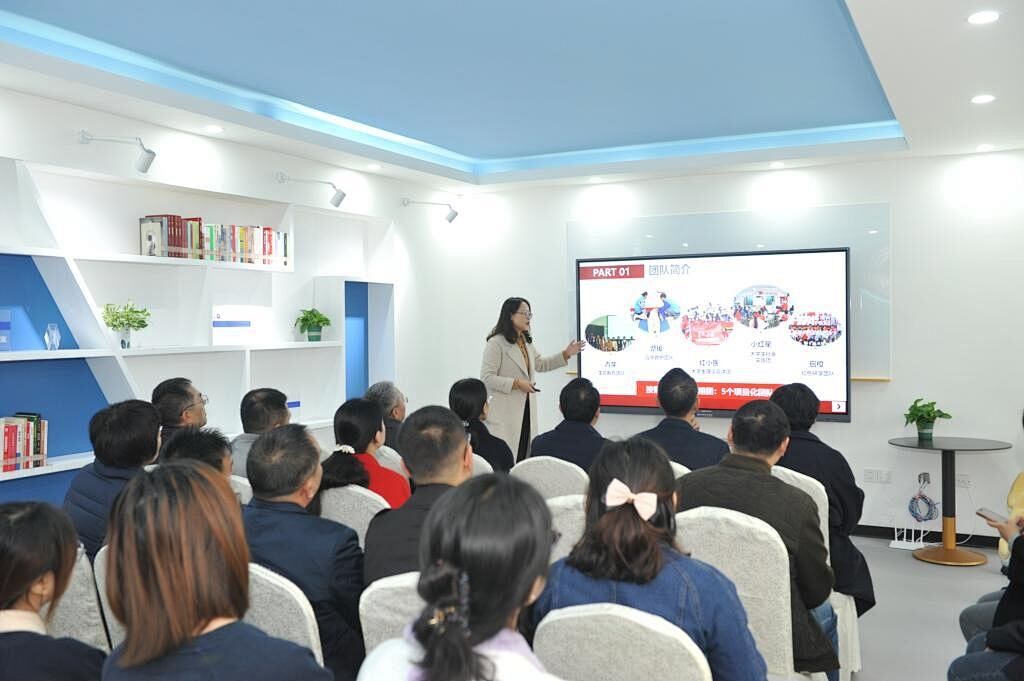The Role of Elderly Carts in Enhancing Senior Mobility
Understanding Modern Mobility Solutions for Aging Populations
As the global population ages, the demand for effective mobility solutions increases significantly. According to the United Nations, the number of people aged 65 and older is expected to more than double from 703 million in 2019 to 1.5 billion by 2050. This demographic shift underscores the need for innovative mobility aids to support the independence and quality of life for our seniors. Elderly carts have emerged as indispensable tools in this pursuit, offering comprehensive mobility solutions tailored to the unique needs of seniors. These carts are designed with features such as stability, lightweight materials, and ergonomic handles, providing support and enhancing safety for the elderly. By incorporating modern technology, these mobility aids not only facilitate easier movement but also help seniors maintain an active and fulfilling lifestyle.
Key Design Features Supporting Daily Movement
Elderly carts are ingeniously designed with several key features that promote daily movement and enhance the user experience for seniors. Crucial design elements include lightweight frames, which make the carts easy to maneuver and reduce the physical strain on elderly users. Additionally, many carts come with adjustable components to accommodate various heights and preferences, ensuring that each user can personalize their aid for optimal comfort. For instance, easy-to-grip handles and robust brake systems allow seniors with varying physical capabilities to maintain control and balance, significantly enhancing their mobility.
Improved Independence Through Elderly Cart Utilization
Reducing Physical Strain in Daily Tasks
Elderly carts significantly reduce the physical strain experienced by seniors in daily activities such as shopping or Home cleaning. According to research on aging populations, many seniors report reduced fatigue when using mobility aids, allowing them to maintain their independence longer. The ergonomic design of these carts plays a crucial role in promoting long-term health by preventing injuries. These features, tailored to alleviate strain, ensure easier handling and movement, making once challenging tasks more manageable for seniors, thereby enhancing their quality of life overall.
Enhancing Accessibility in Home Environments
The impact of elderly carts extends beyond external errands; they dramatically improve accessibility within the home environment. Navigating narrow spaces and moving across different rooms becomes considerably easier, fostering a safer living space. Falls are a significant risk for seniors, with statistics indicating that a large percentage of older adults experience falls at home. By providing stability and support, elderly carts can substantially mitigate this risk, thus enhancing the safety and independence of seniors within their own homes.
Supporting Self-Sufficiency in Community Settings
Elderly carts not only boost independence at home but also support self-sufficiency in community settings. These tools empower seniors to participate in community events, reducing their dependence on caregivers. Real-life case studies from community programs demonstrate that elderly carts enable seniors to be more active participants, fostering social interaction and community involvement. This increased participation not only enhances the social well-being of seniors but also reinforces their autonomy, ultimately promoting a more robust and independent lifestyle.
Safety Innovations in Elderly Cart Design
Anti-Tip Mechanisms for Fall Prevention
Anti-tip mechanisms are a pivotal design feature in modern elderly carts, aimed at bolstering fall prevention among seniors. These mechanisms typically include stabilizers and weight distribution systems that prevent the cart from tipping over, even when carrying heavy loads or navigating uneven surfaces. According to various studies, these innovations significantly decrease the frequency of falls, thereby reducing injury rates in elderly individuals. It's evident that incorporating these safety features into elderly carts can play a vital role in enhancing user confidence and safety, ultimately contributing to a lower incidence of accidents in everyday use.
Ergonomic Design Elements for Secure Transfers
Ergonomic design elements in elderly carts are essential for facilitating secure transfers and promoting ease of mobility. These carts often feature adjustable handles, comfortable grips, and secure seating arrangements, all designed to minimize physical strain. For example, a study on ergonomic Products demonstrated that thoughtfully designed handles and seating can reduce musculoskeletal strain, making it easier and safer for seniors to move from a seated to a standing position. By reducing discomfort and enhancing safety, these ergonomic features ensure that elders can maintain better independence while performing daily activities.
Visibility Enhancements for Outdoor Safety
Visibility is crucial for outdoor safety, especially for seniors using carts, which is why innovations in this area are essential. Many elderly carts now incorporate reflective materials and built-in lights to enhance visibility, thereby reducing the risk of accidents during evening or night outings. Incident reports indicate that such features have significantly improved safety by helping seniors remain visible to other pedestrians and vehicles. These visibility enhancements, therefore, not only offer peace of mind but also enable seniors to confidently engage in outdoor activities, promoting both safety and independence in their daily lives.
Comfort and Convenience Features Revolutionizing Senior Care
Adjustable Seating for Prolonged Use
Comfort and adaptability in seating are crucial for elderly carts, as these features cater to various body types and conditions, ensuring prolonged usage without discomfort. Adjustable seating systems allow seniors to personalize their carts, promoting better posture and reducing strain. Many elderly individuals have shared their positive experiences through reviews, emphasizing the necessity of comfort. For instance, one user stated that their adjustable seat helped them spend more time outdoors without fatigue. Such testimonials underscore the importance of adaptable seating in enhancing the quality of life for seniors, aligning with studies that highlight the benefits of personalized seating in reducing discomfort during prolonged use.
Integrated Storage Solutions for Personal Items
Integrated storage solutions found in modern elderly carts significantly enhance convenience by allowing seniors to carry essential personal items effortlessly. These features ensure that everyday items like medication, small shopping bags, or personal belongings are within easy reach, reducing the hassle of carrying extra bags. Insights from user reviews reveal high satisfaction rates with these storage features. Many users have expressed gratitude for being able to keep their necessities organized and secure, leading to greater independence and ease of mobility. The design enhancements that incorporate practical storage options have become pivotal in revolutionizing convenience features in senior care equipment.
Climate-Adaptive Components for Year-Round Comfort
The integration of climate-adaptive components in elderly carts delivers unparalleled comfort throughout varying weather conditions, effectively optimizing thermal comfort for seniors year-round. Using materials that naturally regulate temperature, these carts provide warmth during colder months and remain breathable in the summer heat, mitigating any climatic discomfort. Studies have reiterated the importance of thermal comfort, emphasizing its role in improving overall health and well-being among older adults. In particular, research has shown that maintaining comfortable body temperatures can prevent adverse health effects, making climate-adaptive features an essential consideration in the design of elderly mobility solutions.
Long-Term Health Benefits of Regular Elderly Cart Use
Maintaining Musculoskeletal Health Through Movement
Regular use of elderly carts significantly contributes to musculoskeletal health by promoting consistent movement among seniors. This is crucial since studies have shown that regular physical activity helps maintain joint flexibility, bone density, and muscle strength, mitigating the risks of falls and improving overall mobility. By encouraging movement, these carts help counteract the sedentary lifestyle often associated with aging, providing tangible health benefits such as reduced stiffness and increased range of motion. Consequently, elderly individuals using these carts can maintain a higher quality of life with less reliance on assistive devices for everyday activities.
Cognitive Benefits of Sustained Social Interaction
Elderly carts not only improve physical mobility but also enhance cognitive functions through increased social interaction. Engaging with the community and participating in social activities have been linked to cognitive benefits, as supported by scientific findings. For instance, seniors who maintain regular social interactions exhibit better memory recall and a slower cognitive decline compared to those who are isolated. Mobility aids like elderly carts facilitate these interactions by allowing seniors to easily engage in social events and community gatherings, ultimately enhancing their cognitive well-being and keeping their minds active and engaged.
Psychological Impacts of Preserved Autonomy
The psychological benefits of elderly cart use are profound, primarily through the preservation of independence. Having the ability to navigate their environments autonomously can enhance seniors' self-esteem and overall mental health. Research indicates that autonomy in daily activities significantly contributes to improved quality of life and psychological well-being. The use of elderly carts empowers seniors to maintain their independence, reducing feelings of helplessness and fostering a sense of control over their lives. This sustained autonomy leads to greater emotional satisfaction and a more positive outlook on aging.
FAQ Section
What are elderly carts and their significance?
Elderly carts are mobility aids designed to provide support and enhance the safety of seniors. They help seniors maintain independence by facilitating easier movement, thus improving quality of life.
How do elderly carts reduce physical strain?
The ergonomic design of elderly carts, with features like lightweight frames and easy-to-grip handles, reduces physical strain, making daily tasks more manageable for seniors.
What safety features are incorporated into elderly carts?
Modern elderly carts include features like anti-tip mechanisms, ergonomic handles, and visibility enhancements, which reduce the risk of falls and accidents, ensuring seniors' safety.
Can elderly carts impact social engagement?
Yes, elderly carts significantly enhance social engagement by allowing seniors to participate in community events, fostering relationships, and reducing social isolation.
What are the long-term health benefits of using elderly carts?
Regular use of elderly carts promotes musculoskeletal health by encouraging movement, enhances cognitive functions through social interaction, and preserves autonomy, leading to psychological well-being.

 EN
EN









































